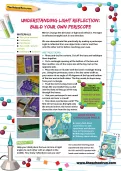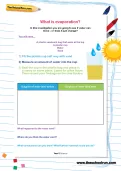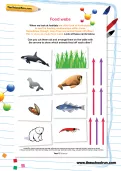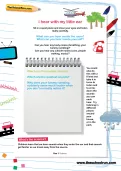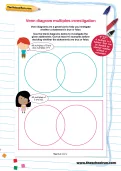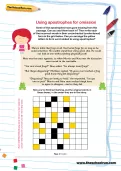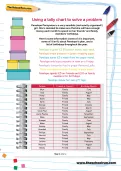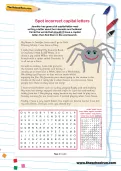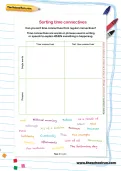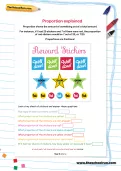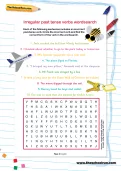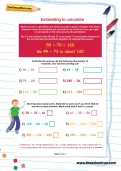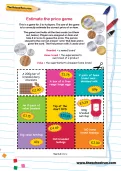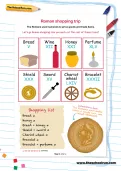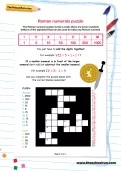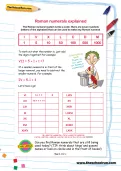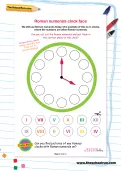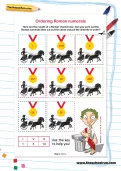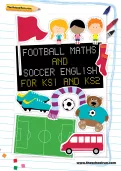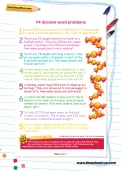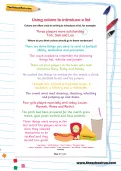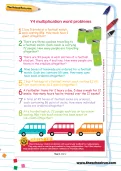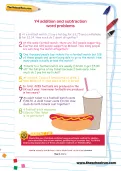Venn diagrams are a great tool to help you investigate whether a statement is true or false. Use the blank diagrams below to investigate the given statements. Give at least 10 examples before deciding whether the statements are true or false.
or
Register to add to your saved resources
Already a subscriber? to view this content.
Some of the apostrophes have gone missing from this passage. Can you add them back in? Then write each of the incorrect words in their uncontracted (unshortened) form in the grid below. Can you arrange the yellow letters to form word related to using apostrophes?
or
Register to add to your saved resources
Already a subscriber? to view this content.
Penelope Pennywise is a very sensible (and scarily organised!) girl. She’s decided to make sure that she will have enough money each month to spend on her friends’ and family members’ birthdays. Here’s some information (some of it is important, some of it isn’t) about Penelope’s plan, and a list of birthdays throughout the year. Use the tally chart to help you work out how much Penelope will need to spend each month on birthdays. Will she be able to buy presents for everyone on her list?
or
Register to add to your saved resources
Already a subscriber? to view this content.
Jennifer has gone a bit capital-letter-mad writing a letter about her interests and hobbies! Circle the words that shouldn’t have a capital letter, then find them in the wordsearch.
or
Register to add to your saved resources
Already a subscriber? to view this content.
Time connectives are words or phrases used in writing or speech to explain WHEN something is happening. Can you sort these time connectives from regular connectives?
or
Register to add to your saved resources
Already a subscriber? to view this content.
Proportion shows the amount of something out of a total amount. For instance, if I had 20 stickers and 7 of them were red, the proportion of red stickers would be 7 out of 20, or 7/20. Proportions are fractions!
or
Register to add to your saved resources
Already a subscriber? to view this content.
A fun and free activity created by an experienced teacher with the aim of teaching KS2 children about irregular past tense verbs. Each of the sentences on the worksheet includes an incorrect past-tense verb. Circle the incorrect verb and then find the correct form of the verb in the wordsearch.
or
Register to add to your saved resources
Before we do a calculation it’s useful to make a quick estimate. This helps because when we complete the calculation we will know if we are right or not based on the closeness to the estimation.Can you estimate the answers to the following? Remember to estimate, don’t do the working out!
or
Register to add to your saved resources
Already a subscriber? to view this content.
This is a game for 2 to 4 players. The aim of the game is to correctly estimate the correct price of an item. The game host holds all the item cards. Players are assigned an item and take it in turns to guess the price. The person closest to the correct answer ‘wins’ that item and is given the card. The first person with 3 cards wins!
or
Register to add to your saved resources
A fronted adverbial is used at the start of a sentence to explain more about the verb. It tells us where, when or how the verb is done. After a fronted adverbial, we often need a comma. Can you place the missing commas correctly in these sentences?
or
Register to add to your saved resources
Already a subscriber? to view this content.
Let’s go Roman shopping! Can you work out the cost of these items?
or
Register to add to your saved resources
Already a subscriber? to view this content.
Can you complete this puzzle with the correct Roman numerals?
or
Register to add to your saved resources
The Roman numeral system is like a code: there are seven symbols (letters of the alphabet) that can be used to make any Roman numeral. To work out what the number is, just add the digits together! If a smaller numeral is in front of the larger numeral, you need to subtract the smaller numeral. Now you have a go...
or
Register to add to your saved resources
We still use Roman numerals today. One example of this is on clocks, where the numbers are often Roman numerals. Can you find pictures of any famous clocks with Roman numerals on?
or
Register to add to your saved resources
Already a subscriber? to view this content.
Here are the results of a Roman chariot race. Can you work out the Roman numerals then cut out the cards and put the chariots in order?
or
Register to add to your saved resources
Make the most of World Cup fever and give grammar, division and spelling practice a football twist with our soccer-themed worksheets for KS1 and KS2 children.
or
Register to add to your saved resources
Already a subscriber? to view this content.
Can you answer these division word problems? They are all about football!
or
Register to add to your saved resources
Already a subscriber? to view this content.
Colons are often used in writing to introduce a list. Where do you think colons should go in these sentences?
or
Register to add to your saved resources
Already a subscriber? to view this content.
Test your multiplication skills with these football word problems.
or
Register to add to your saved resources
Already a subscriber? to view this content.
How good are your addition and subtraction skills? Find out by solving these football-themed word problems.
or
Register to add to your saved resources
Already a subscriber? to view this content.
